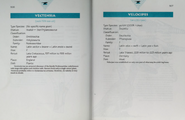Not to be confused with Velocisaurus or Velociraptor.
| Velocipes | |
|---|---|

| |
| Reconstruction as a basal theropod | |
| Scientific classification | |
| Kingdom: | Animalia |
| Phylum: | Chordata |
| Class: | Sauropsida |
| Superorder: | Dinosauria |
| Order: | Saurischia |
| Suborder: | Theropoda? |
| Genus: | †Velocipes Huene, 1932 |
| Binomial name | |
| †Velocipes guerichi von Huene, 1932 | |
Velocipes (meaning "quick foot") is a possible theropod dinosaur genus from the Late Triassic. Its fossils were found in the Norian-age Lissauer Breccia, now in southern Poland.
Upon discovery, Velocipes was thought to have been a coelurosaur, but more recent studies have shown that Velocipes was probably a basal theropod or dinosauriform.[1]

Holotype fibula as preserved in 1932 (left) and 2012 (right)
History and taxonomy[]
The type species, V. guerichi, was first described by Huene in 1932 as a coelurosaur, based on the proximal portion of a very poorly preserved fibula that was discovered in the Lissauer Breccia of southern Poland by Georg Gürich around 1898.[2][3] The bone was damaged during the Second World War and was thought to have been destroyed until it was rediscovered in 2012. In 1956, von Huene placed Velocipes in the Halticosauridae, which has since become monotypic to only include Halticosaurus.[4] In 1984, Samuel Paul Welles considered Velocipes to be synonymous with Liliensternus.[5]
A later paper, published in 2000 by Rauhut and Hungerbuhler, claimed that the only specimen of this animal was not well preserved enough to be confidently identified as part of a fibula, and classified the genus as an "indeterminate vertebrate".[6] In 2004, Ronald Tykoski and Timothy Rowe listed Velocipes as a possible ceratosaur or coelophysoid.[7] Weishampel et al. (2004) also listed Velocipes as a possible ceratosaur.[8]

Approximate size comparison
However, an SVP abstract reviewing putative dinosauriform remains from the Triassic of southern Poland confirmed the original theropod classification of Velocipes by von Huene, which was elaborated in detail in a 2016 paper.[9][10] The authors considered Velocipes to have been a basal theropod or a neotheropod.
Paleoecology[]
Gallery[]
References[]
- ↑ Velocipes on the Dinosaur Mailing List
- ↑ Huene, F. von. (1932). Die fossile Reptil-Ordnung Saurischia, ihre Entwicklung und Geschichte. Monogr. Geol. Pal. 4 (1) pts. 1 and 2, viii + 361 pp.
- ↑ Gürich, "Das Paläozoikum des Polnischen Mittelgebirge", Verhandlungen der Russischen Kaiserlichen Gesellschaft zu Saint Petersburg 32 1898:1–539).
- ↑ von Huene F. 1956. Paläontologie und Phylogenie der niederen Tetrapoden. Jena: Gustav Fischer Verlag.
- ↑ Welles SP 1984. Dilophosaurus wetherilli (Dinosauria: Theropoda) osteology and comparisons. Palaeontographica Abteilung A 185: 85-180.
- ↑ Rauhut, O. W., and Hungerbühler, A. (2000). "A review of European Triassic theropods." Gaia, 15: 75-88.
- ↑ Tykoski RS, Rowe TB 2004. Ceratosauria. In: Weishampel DB, Dodson P., Osmólska H. (ed.). The Dinosauria. II edition. Berkeley: California University Press, pp. 47-70.
- ↑ Weishampel DB, Barrett PM, Coria RA, Le Loeuff J., Xu X., Zhao X., Sahni A., Gomani EMP, Noto CR 2004. Dinosaur distribution. In: Weishampel DB, Dodson P., Osmólska H. (ed.). The Dinosauria. II edition. Berkeley: University of California Press, pp. 517–606.
- ↑ Czepinski et al., 2014. A Re-evaluation of the Purported Dinosaur Finds From The Middle-Late Triassic Of Poland. Journal of Vertebrate Paleontology 34 (Supplement to volume 5): 115A.
- ↑ Tomasz Skawiński, Maciej Ziegler, Łukasz Czepiński, Marcin Szermański, Mateusz Tałanda, Dawid Surmik & Grzegorz Niedźwiedzki, 2016. A re-evaluation of the historical 'dinosaur' remains from the Middle-Upper Triassic of Poland. Historical Biology (advance online publication) DOI:10.1080/08912963.2016.1188385 http://www.tandfonline.com/doi/full/10.1080/08912963.2016.1188385


